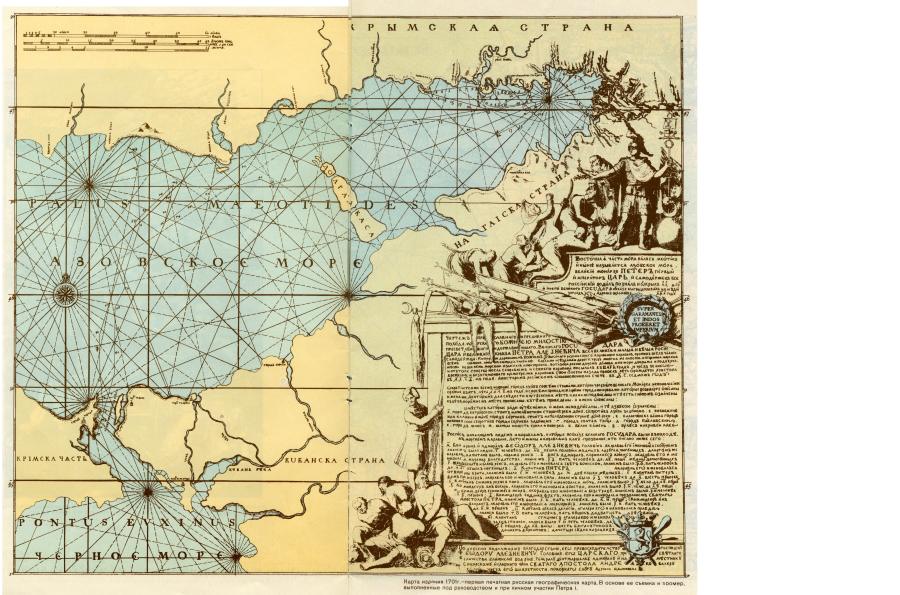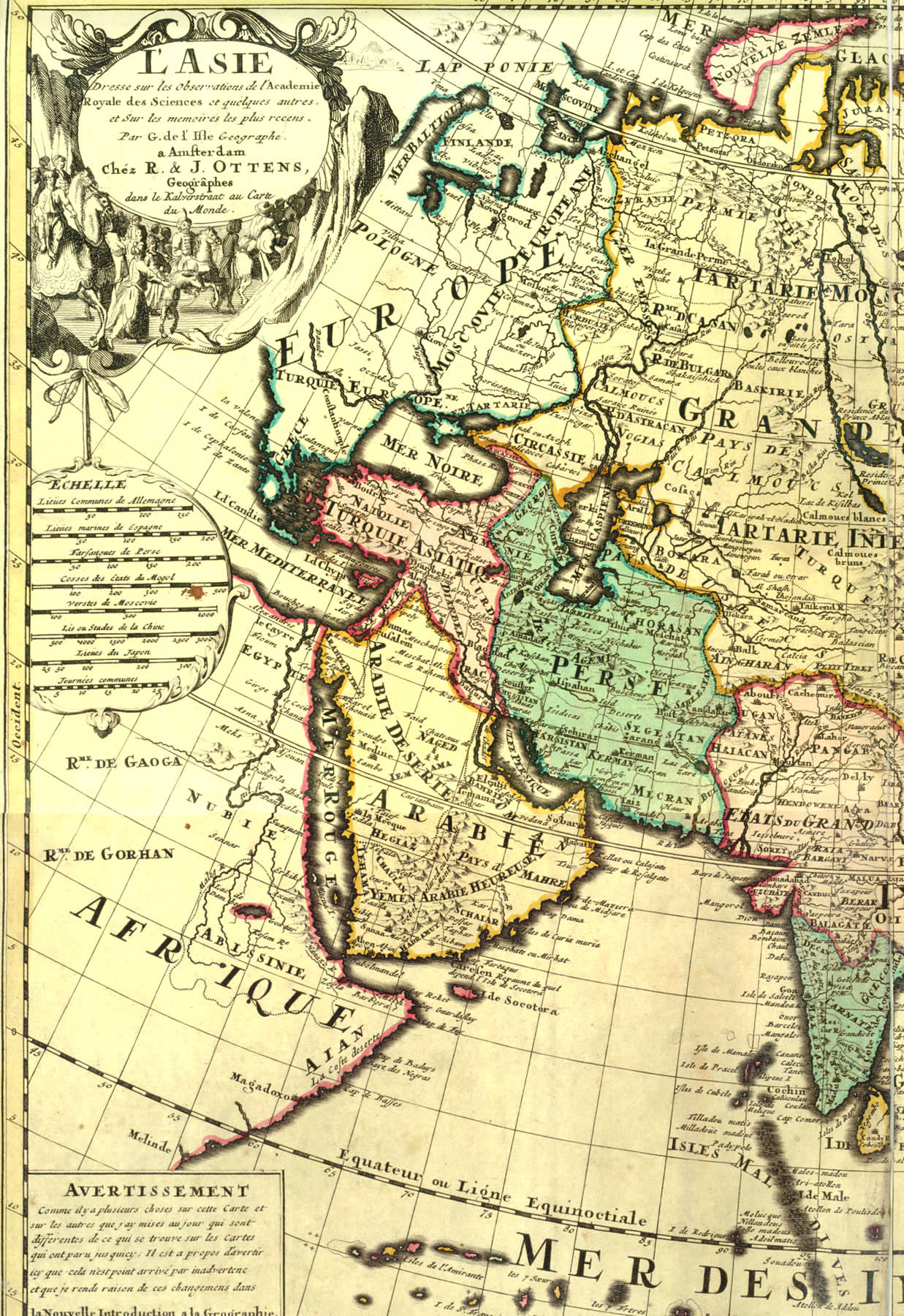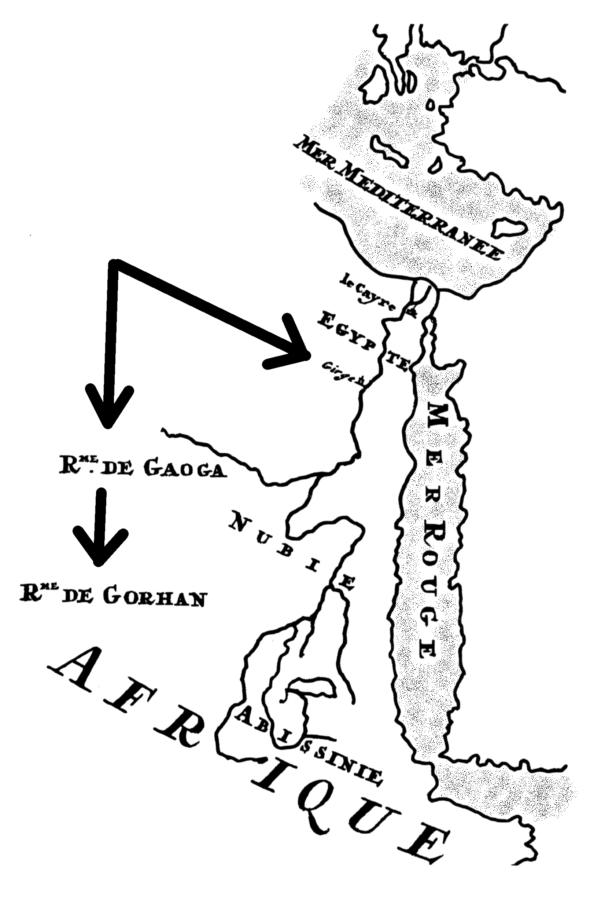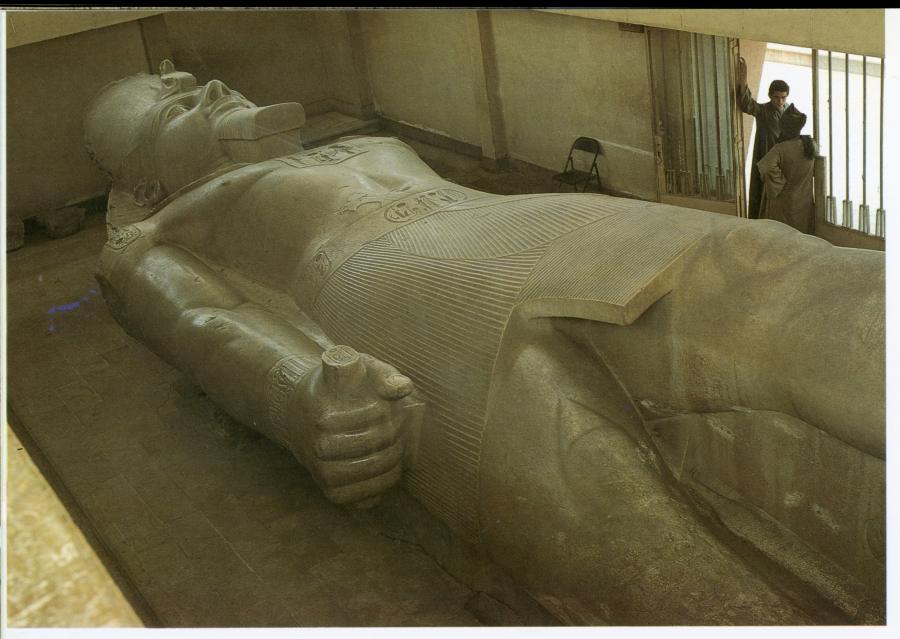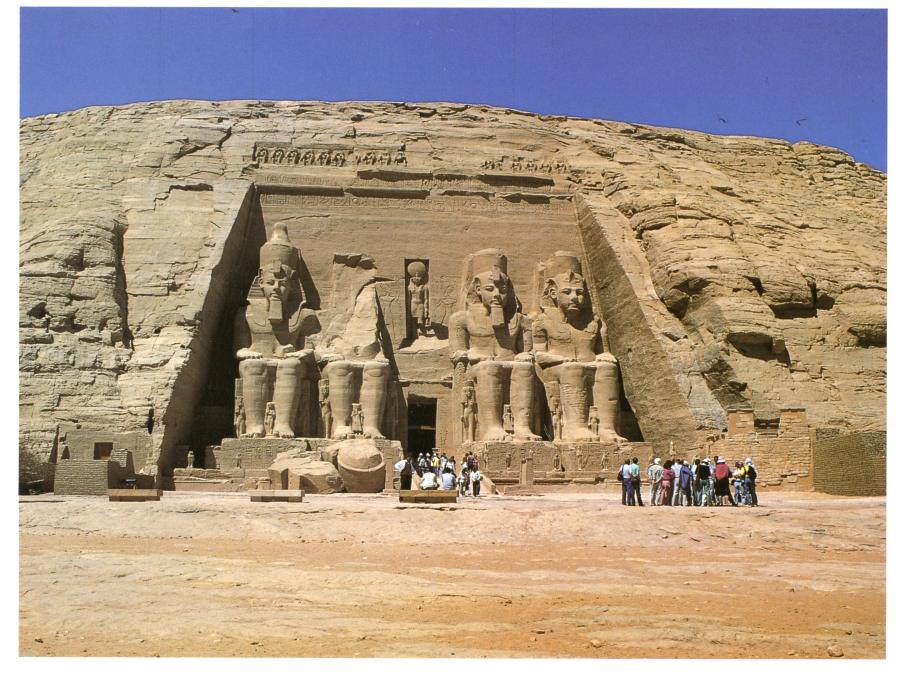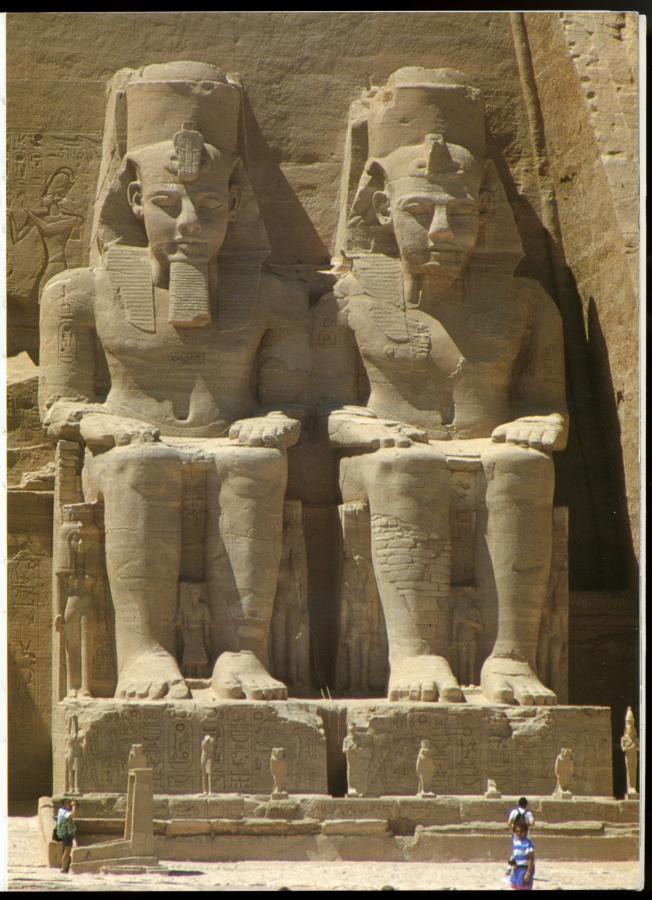Part 5.
Ancient Egypt as part of the Great “Mongolian” Ataman Empire of the XIV-XVI century.
Chapter 17.
The Trojan War of the XIII century and Pharaoh Ramses II. “Ancient” Egypt of the XIII-XVI century.
2. The Great City (citadel) of Kadesh in the “ancient” Egyptian texts.
2.1. The city of Kadesh in the Land of the Amorrheans.
The citadel of Kadesh located next to the kingdom of the Pharaohs in the Land of the Amorrheans plays an important part in the “ancient” history of Egypt ([99], page 442). In other words, the city of Kadesh should be looked for in some land near the sea (the root MOR), or a Romean land, considering the possibility of a reversed reading. Bear in mind that both reading methods were used in the lands in question - the Greek method (left to right) and the Arabic/Hebraic method (right to left).
2.2. Limanon = Rimanon = Roman.
Moreover, it turns out that the city of Kadesh was in close proximity to the land of Limanon or Rimanon, or even part of this country ([99], page 443). However, “Rimanon” obviously stands for “Rome”. We shouldn’t forget that Scaligerian history assures us that the events in question date from antediluvian antiquity and not the Middle Ages - no Rome could possibly have existed back then, and the forefathers of the Europeans are said to have dwelled in cold caves.
Furthermore, the residents of this land turn out to be of a purely Canaanite origin ([99], page 443). However, in CHRON4 (as well as above) we already demonstrated that the Biblical “land of Canaan” (or “land of the Khans”) simply identifies as Russia (or the Horde) and the Ottoman = Ataman Empire.
Even today as we study the map of Istanbul (formerly known as Czar-Grad), we see the name Kadikoy that pertains to one of its suburbs (see fig. 17.1). It is most likely to be the same as Kadesh. Therefore, one of the ancient names of New Rome (Kadesh) has survived until the present day.
Thus, we have reasons to assume that the famous “ancient” city and the great citadel of Kadesh as mentioned in the “ancient” Egyptian chronicles are identifiable as the New Rome, or Czar-Grad. We often refer to the fact that the mediaeval Czar-Grad used to rank among the world’s strongest citadels.
2.3. Kadesh as New Rome on the Bosporus.
Further on, the “ancient” Egyptian chronicles report that the city, or citadel of Kadesh stood on River Orontha ([99], page 329).
Orontha (or simply “Rhone”) is a generic name of a river (see CHRON5, Chapter 11:5.3) - therefore, the reference simply means that the city of Kadesh stands on a river, which is quite natural, given that the New Rome stands on the bank of the long and narrow Bosporus strait, which was known to the ancients as a river. Even the seas were at some point referred to as rivers - in the epoch of coastal navigation, which made the seas seem as wide rivers to the sailors.
2.4. The city of Kadesh blocks the way to the Land of the Goths.
“Beyond Kadesh, the land of the Hita lay open before Seti the conqueror” ([99], page 442).
This is quite natural - the troops approach the Bosporus moving from the direction of the Mediterranean; passage through the Bosporus is blocked by New Rome. This was one of the key strategic advantages of New Rome - it had fully controlled the Bosporus. Any army that takes Czar-Grad gets open access to the Slavic Balkans, and the land of the Goths that lays beyond it.
3. The Canaan land of Ruthen.
3.1. Russia, or the Horde of the Khans.
The entire “ancient” Egyptian history is marked by the tale of the mighty land called the Canaan Ruthen, or Ruthenia ([99], page 441 and on). Ruthenia borders with the kingdom of the pharaohs; the nations that inhabit it have disputes and even wars with the pharaohs at times, occasionally also acting as their close allies.
We already know the name Ruthenia well enough - it was one of the names borne by the Horde, or Russia. It is a derivative of the word “rat”, which translates as “army” (see Part 6 of the present book). Therefore, the “ancient” Egyptian Canaan Ruthenia is none other but Russia, or the Horde of the Khans.
3.2. Another reference to the city of Khaleb = Aleppo = Lipetsk in Russia (or the Russian word “khleb”, “bread”.
Above we have already voiced the idea that the city of Khaleb, or Aleppo, might be the Russian city of Lipetsk, which is located near River Don. This assumption is confirmed by the following information: “Khilibu, or Khaleb, is the ancient name of Aleppo, which lays a great deal further to the North than the city of Kadesh on Orontus” ([99], page 471). Therefore, the “ancient” Egyptian city of Khaleb must be looked for a great deal further to the North than the New Rome. The real location of the city of Lipetsk is in good concurrence with this geographical description.
Later on, after the Great = “Mongolian” conquest of the Western Europe, the Russian name “lepo” (“beautiful”), or the Russian word “khleb” (“bread”) must have travelled to Italy and stayed there to this day as the name “Apulia”.
4. The land of Nakharain as the Nogai River (or, alternatively, Greece/Byzantium).
The “land of Nakharain” plays a great part in the “ancient” Egyptian history ([99], page 444 etc). In the epoch of pharaoh Ramses this kingdom is an ally of the Hitians ([99], page 467), or, in other words, an ally of the Goths, according to our reconstruction. We shall offer two possibilities of identifying the “ancient” Egyptian land of Nakharain as a real geographical area of the XIV-XVI century.
First version. The name “Rhone” used to stand for “river”, qv above. It is therefore hard to escape the impression that Nakha-Rain (or Naga-Rain) stands for “Nogai River”, or “Nogai Ra” (“Nogai Volga”, in other words, given that Volga was formerly known as Ra).
“Nagai” is the name of the famous Nogai Horde, which had resided between the lower Volga and the Azov Sea up until the XVIII century. Incidentally, this is also an explanation of the etymology of the word “nagaika” - the Cossack battle whip. The readers may observe the existence of the “ancient” Egyptian land of Nakh-Rain, or the Nagai Land, next to the Azov Sea, in the printed Russian maritime chart of 1701, for instance, qv in figs. 1.15 and 1.16.
By the way, the famous Nagai Horde was completely destroyed under the Romanovs, in the epoch of Catherine the Great. The Romanovs were finishing off the remnants of the Great Horde that still refused to recognise their authority.
Another version is as follows. “Nakharain” could stand for “nagornaya strana”, or “hilly land” - Greece, for instance (Byzantium was called “Goretsia” by the Slavs - the name refers to hills, or mountains). Thus, the “ancient” Egyptian Nakharain could in reality have identified as the environs of Czar-Grad
5. Kita = Kitai (China), or Scythia.
In the “ancient” Egyptian chronicles the land of Hita is also referred to as the land of Kiti, or “Kitai” (the modern Russian name of China). For instance: “The Czar of the Hita stands here, with multitudes of warriors by his side, which he brought along in great abundance from every land owned by the Hita [the Goths - Auth.], the Nakharain [Nogai Horde - Auth.] and the entire Kiti. They have horses and cavalry” ([99], page 472).
However, we have often discovered that Kita, or Kitai, was merely another name of Russia, or Scythia. See also Part 6.
6. Syria and Assyria (or Ashur in the “ancient” Egyptian inscriptions) as Russia, or the Horde.
The reversed reading of the name Syria is Russia (SR and RS unvocalised). It is believed that the name Syria is derived from the ancient name Assyria, which could also be read as Asur or Ashur.
However, the name Assyria, or SSR unvocalised, is the reversed reading of Russia (RSS). We see that Assyria, Asur and Ashur as encountered in Egyptian texts are but three different versions of the same name.
Moreover, the fact that Syria (or Assyria) identifies as Russia, or Ruthenia in the inscriptions found upon the “ancient” Egyptian monuments is commonly known. This is, for instance, what we learn from Brugsch: <<The demotic translation of the large Tanis Stone, a bilingual artefact also known as the Canopian Decree that dates from the epoch of the Ptolemaic rulers, makes it possible for us to assert that the usual way of referring to Syria was Asher [Brugsch is speaking about the “ancient” Egypt - Auth.], but the primordial ancient name of the same land read in the hieroglyphic part of the stone is Rutennu with the added reference to the ‘orient’. Therefore, the following names, which hail from different epochs and pertain to different languages, all mean the same thing: Syria, Oriental Ruthennu, Asher and Menti . . . The more recent Asher conceals the Semitic root ‘Ashur’, or Assyria>> ([99], pages 242-243).
Let us reiterate yet another time that Ruthenia was the name of Russia, or the Horde, qv in Part 6. This fact is even recognized in Scaligerian history! Incidentally, the “ancient” Egyptian addition of “oriental” once again confirms the correctness of identifying the “ancient” Egyptian Ruthenia as the Horde, or Russia.
Thus, during a certain historical period (namely, the XIV-XVI century), the name Ashur (or Assur, or Assyria) was used for referring to Russia, or the Horde.
The fact that Assyria can be identified as Russia is indirectly confirmed by the following facts discovered by Brugsch: <<In the East . . . the great kingdom of Hita [the Gothic kingdom, that is, or Russia - the Horde, as we already know - Auth.] was replaced by a new power, known to us in history as the Assyrian Kingdom. Egyptian monuments of that time refer to the heirs of the Hita nation . . . as to Mat, calling the Ruler of the Mat “the Great King of Mat, and the Supreme King of Kings”>> ([99], page 609).
The famous philologist Shafarik believes Mat to be an Aryan word translating as “tribe” or “nation”, pointing out that it used to be included in such names as Sarmat, Sauromat etc ([99], page 609).
However, the word Mat is well known in the Russian language - it translates as “mother”, and is indeed closely related to the words “tribe” and “nation”. It is still used in conjunction with the word “earth”. The Slavic “narod mat” (“mother nation”, or “motherland”) is manifest in the “ancient” Egyptian name of “Naromat, King of Kings” ([99], page 617).
Shafarik’s idea about the Sarmatians is confirmed by the presence of the title “Sara-En-Mat” in the “ancient” Egyptian inscriptions - Sarmat, no less. It was later replaced by the title “Sara-En-Mashush”.
The latter title is translated by Brugsch as “Prince, or Chieftain of the Maxians” ([99], page 640). It may be a slight corruption of the title “Czar of Meshech”, or “Muscovite Czar”.
The Great = “Mongolian” conquest of Egypt in Africa left a number of traces in the geographical names that had existed until the XVIII century at least. Let us, for instance, consider the map of Asia made in Amsterdam in the XVIII century (see fig. 1.28). In fig. 17.2 we see a drawn copy of the fragment of this map that we are referring to presently.
The map indicates the areas of Gaoga and Gorhan in the Middle Nile (Nubia, qv in fig. 17.2). In the Lower Nile we also see the name Girge.
These names must be repercussions of the names of the Gog nation already familiar to us - the Cossack Goths and Gurkhan, or Gyurgiy-Khan (Khan Youri, or Georgiy). The form “Gurkhan” was already encountered in our analysis of the “ancient” Chinese history, qv in CHRON5, Chapter 6:4.2. The name Girge all but coincides with the name Georgiy = Gyurgiy = Youri. On the modern map of Egypt we see the name El-Harga in roughly the same area, which is possibly related to Girge. It is most likely to be one of the surviving vestiges of the fact that Egypt in Africa was conquered by the Goths, or George’s Army, in the XIV century.
7. Great Pharaoh Ramessu II = Ramses II = Roman Jesus.
According to Scaligerian chronology, Pharaoh Ramses II reigned in the alleged XIII century B. C. ([1447], page 254). It is the very epoch of the Trojan War in its Scaligerian dating ([72], page 243). Therefore, our reconstruction implies that the “ancient” Egyptian biography of Ramses II is most likely to contain an account of the Trojan War, or the war fought in the XIII century of the New Era. As we shall see below, this forecast is confirmed.
We must point out an interesting circumstance. It turns out that in this case the correction of the erroneous Scaligerian chronology requires a mere replacement of “B. C.” by “A. D.”, and everything falls into place instantly.
Could the appearance of the “B. C.” indication be a result of the fact that the Egyptian chronology was created very recently, much later than the “Anno Domini” era? Somebody may have decided to ascribe extra age to a number of mediaeval events that were dated correctly in certain documents of a very recent origin merely by replacing “B. C.” with “A. D.” - a very simple operation.
Here is a list of various names borne by Ramses II: Ra-Userma-Soteph-En-Ra, Ramessu II, Miamun I, Ses, Sestesu, Sethesu, Sestura, Sethosis, Ramesses and Sesostris ([99], page 456).
The title “Great Pharaoh Ramessu” can easily be interpreted as “The Great TRN Ram-Jesus”, or the Great TRN Rome Jesus. TRN stands for “king”, “tyrant”, “Trojan”, “Tartar”, “Turkic” and “Frankish”. It is possible that the name in question didn’t merely apply to a single king, but rather the entire New Rome, or even the whole Byzantium of the XIII century.
Ramses II is believed to be one of the most famous pharaohs of the “ancient” Egypt - he is the conqueror of the whole world and the hero of numerous legends ([99], page 456). “The number of monuments built to honour this monarch that cover the soil of Egypt and Nubia as ruins . . . is truly great; it would be more correct to say that they are numberless” ([99], page 456).
There are many monuments built to honour Ramses II in Egypt. Their size is mind-boggling; commentators usually call them colossal. In fig. 17.3 we see one of the enormous statues of Ramses II kept in a museum nowadays. In fig. 17.4 we see “the remnants of a colossal statue of Ramses II; despite the great size, the colossus was sculpted with great care and fine finish. According to calculations, its height equalled 17 metres, and it weighed around 100 tonnes; a single fingernail was 19 centimetres long!” ([370], page 128). In fig. 17.5 we see the gigantic statue of Ramses that stands on the Railroad Station Square in Cairo today.
At the distance of some 300 kilometres from Asuan we find “the grandiose construction of the greatest pharaoh in Egyptian history [Ramses II - Auth.] - Abu-Simbel, the temple dedicated to a divine triad . . . In reality, it was built for the sole purpose of glorifying its builder, Ramses II the Great, for centuries to come” ([370], page 182). The temple can be seen in figs. 17.6 and 17.7. We must point out that the snake, or ureus, found upon the crowns of the pharaohs, looks remarkably like the Christian cross (see fig. 17.8).
Since Ramessu is most likely to stand for “Roman Jesus”, it would make sense to voice the hypothesis that Pharaoh Ramessu identifies as Jesus (emperor Andronicus-Christ), who lived in Czar-Grad, or New Rome, and was crucified there in 1185. The phrase “Ramessu the victor” must simply stand for “Christ the victorious” and refer to the victory of Christianity. One instantly understands the exclusive role played by Ramses in the history of Egypt, a Christian country of the XII-XVI century. It is for this reason that all the other numerous names of Ramses, such as Ses, Sestesu and so on ([99], page 456) also begin with the name “Jesus”, which is quite obvious.
It is possible that the name Ramessu is used in the “ancient” Egyptian chronicles for referring to the Byzantine rulers of the XII-XIV century in general, implying them to be followers of Jesus Christ. That is to say, Ramessu wasn’t an individual name, but rather an imperial title along the lines of “Roman King, Follower of Jesus”. The number (II) was added by the Scaligerite chronologists of the XVII-XVIII century, who had built the numerous duplicates into a long row. The phantom reflections of a single ruler found therein had to be numbered accordingly.
8. Ramses, or Roman Jesus as the deity of the Ottomans (Atamans).
Our hypothesis that Ramessu (Rome+Jesus) as mentioned in the “ancient” Egyptian texts wasn’t an individual ruler, but rather Jesus Christ (1152-1185) as the protector of the Romean Christian kingdom, or Byzantium of the XII-XIII century, and later the “Mongolian” Empire, is confirmed by the evidence of the “ancient” Diodorus of Sicily. Diodorus must have written in the XVI-XVII century. He calls Ramses II Osimandias ([99], pages 804-805). This is likely to stand for “Ottoman God”.
However, as we understand today, the Ottomans were a nation of the XIV-XVI century. The fact that Jesus Christ is referred to as the god of the Ottomans shouldn’t surprise us in the least - according to our reconstruction, the final division of Christianity into the Orthodox faith, Islam and Catholicism took place in the XVII century. Therefore, in the XIV-XVI century the Ottomans, or Atamans, were regular Christians, just like the rest of the Christian nations that inhabited the Great = “Mongolian” Empire.
Diodorus tells us a lot about the sepulchre of Osimandias as well as his statue - “the largest statue in Egypt” ([99], pages 805-806).

